[Math & Physics #10] The Beauty of Ellipse - Kepler's Law of Planetary Motion [Part 1]
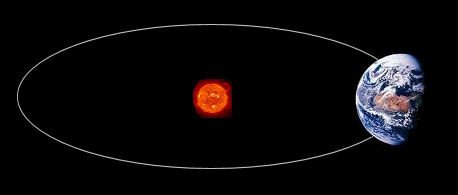
[1]
Kepler's Laws of Planetary Motion [Part 1] - Beauty of Ellipse
1. History
In the early stage of heliocentrism, it was widely believed that planets have pefect circular orbits.
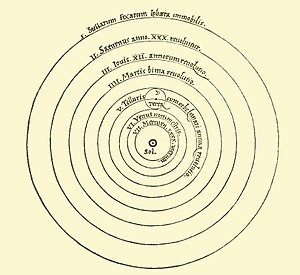
[2]
Early heliocentrism postulated that
The sun is at the center of all orbits.
All planets revolve around the sun in uniform circular motion .
Even Galileo Galilei, the most famous natural philosopher in 16~17 th century believed that all planets have circular orbits.
It was not unil Johannes Kepler found three laws of planetary motion that people realized what orbits of planets really are. In 1609, Johannes Kepler published his first two laws about planetary motion, having found them by analyzing the astronomical observations of Tycho Brahe . Kepler's 3rd law was published in 1619. Kepler had believed in the Copernican heliocentric model of the solar system, which called for circular orbits, but he could not reconcile Brahe's highly precise observations with a circular fit to Mars' orbit—Mars coincidentally having the highest eccentricity of all planets except Mercury. His first law reflected this discovery which I will discuss about in this talk.
2. Ellipse Revisited in Polar Coordinates
2-1. Eccentricity and Directrices of an Ellipse
As we've discussed in previous talk, (<Math Talk #9>) an equation for ellipse having semi-major axis and semi-minor axis
is
where are two focal points. Here we define two concepts called eccentricity and directrix.
Eccentricity of an ellipse is defined as
For an ellipse of the form (1), we have eccentricity .
Directrices of an ellipse are the lines perpendicular to the major axis at distances
from the center of an ellipse. Using diagram,

A simple algebra gives for any point on ellipse,
, where
is the perpendicular foot from
to the closest directrix.
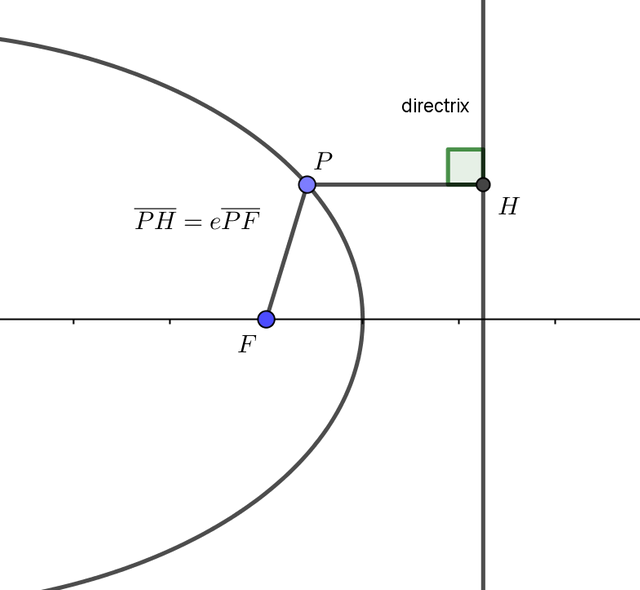
2-2. Using Polar Coordinates
Consider an ellipse having one focus at the origin with directrix .

If we denote the perpendicular foot from to directrix as
, then using diagram in section 2-1 gives
solving simultaneous equations give an equation of ellipse in polar coordinate,
3. Proving the Kepler's First Law of Planetary motion
Now all the background ingredients for proving first law of planetary motion are prepared.
Kepler's First Law of Planetary Motion.
The orbit of a planet is an ellipse with the Sun at one of the two foci.
First, we define some variables. [3]
: angle between the positive x-axis and the line connecting earth and the sun.
: radial and angular component of polar coordinate in earth's frame.
Locating the sun at the origin, we get the following diagram.
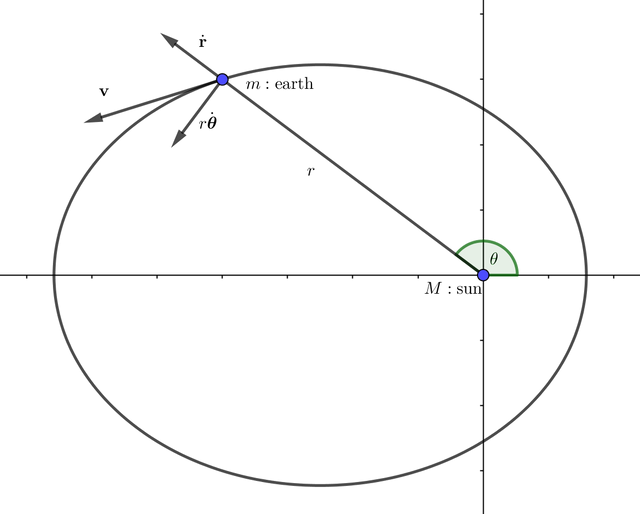
By the law of conservation of energy, the sum of potential and kinetic energy of earth is constant everywhere; i.e.
Decomposing the velocity vector in radial, angular component,
where dot denotes differentiation respect to time and . Also the angular momentum is given by
Now make substitution . Then
, and
because . Combining energy equation and angular momentum equation, we have
where . Now put this equation into the integral, gives
using the fact . Then the equivalent form would be
The minus sign on the right side of the final equation just denotes whether the sun is located at left or right focal point, so it doesn't effect the shape of the orbit. Using the equation in section 2-2, we have a nice elliptical orbit of the earth!

4. Actual Values considered
Actual values are measured by experiment or other analytical techniques. - [4]
So, the eccentricity of earth's orbit is
which is very close to circular orbit . This is why astronomers in 16~17th century believed the earth's orbit as circle; since there were no instruments which can measure such slight difference. Also the length of semi-major axis would be
The earth is rotating with total mechanical energy of
respect to the sun, which is way beyond our imagination~!
5. Conclusion
Although Kepler himself found three laws of planetary motion, at that time there were no precise mathematical foundations to prove them rigorously. It was Newton - the giant - who first proved three laws mathematically, using calculus. Nevertheless, Kepler's intuition (which was due to Tycho Brache's observations to be honest) was a great breakthrough in study of astrodynamics. Next time I will discuss about Kepler's second law of planetary motion.
I will end this post by real (not exaggerated) orbit of earth.
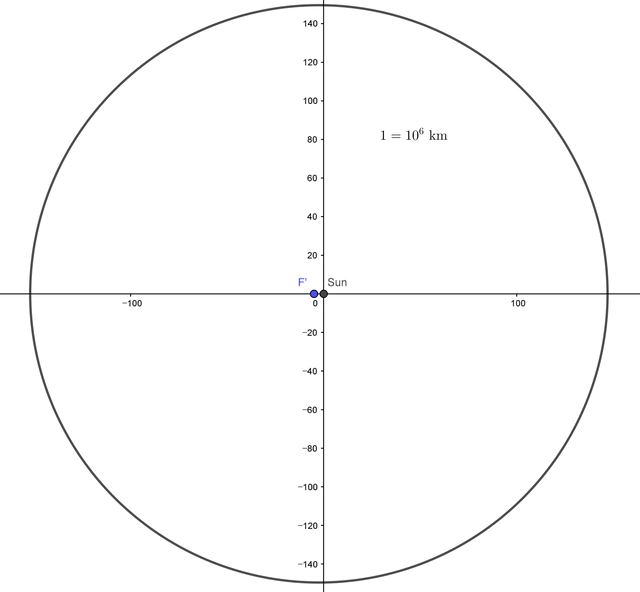
6. Citations
[1] https://www.intmath.com/plane-analytic-geometry/5-ellipse.php (only image is used)
[2] https://en.wikipedia.org/wiki/Copernican_heliocentrism (only image is used)
[3] http://radio.astro.gla.ac.uk/a1dynamics/keplerproofs.pdf (proof technique)
[4] https://en.wikipedia.org/wiki/Earth%27s_orbit#Events_in_the_orbit (orbital characteristics)
All the other materials (2D plots) are made by myself using GeoGebra.

GREAT information dude, loved it..
Thanks. Your posts about sequences were great too.
haha just trying better everytime.
ouch!my head breaks every time I try to absorb heavy post....sincerely you are doing great here ..ajah!😊
Thank you. I'll try to post quality materials on steemit
This post has been voted on by the steemstem curation team and voting trail.
There is more to SteemSTEM than just writing posts, check here for some more tips on being a community member. You can also join our discord here to get to know the rest of the community!
Thanks a lot!
Hi @mathsolver!
Your post was upvoted by utopian.io in cooperation with steemstem - supporting knowledge, innovation and technological advancement on the Steem Blockchain.
Contribute to Open Source with utopian.io
Learn how to contribute on our website and join the new open source economy.
Want to chat? Join the Utopian Community on Discord https://discord.gg/h52nFrV
Thanks a lot!